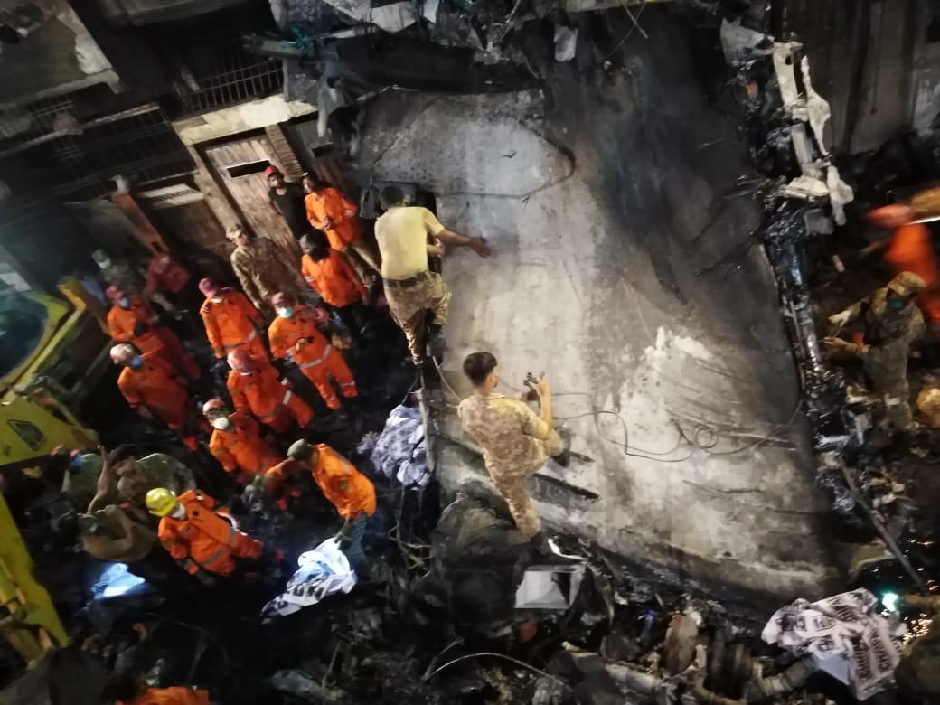Media most foul
by Kamal Siddiqi
The way the Pakistani media covered the crash of PK8303 leaves a lot to be desired. This is the time for us to start a discussion on how news channels need to operate in such disaster situations and why the Pakistan Electronic Media Regulatory Authority (Pemra) needs to step in when they don’t.
To better understand the problem, let us identify where the media went wrong. To begin with, let us question the fixation of news channels with breaking news. Given that we have a disproportionately high number of news channels because the cross-media ownership laws were amended at the behest of then information minister Shaikh Rasheed Ahmad, there is an unhealthy competition amongst channels to “break” news.
Consider this: In a country like the United Kingdom, there are four major news channels. In Pakistan there are 40. They must stand out to be noticed and this is where the problem begins.
Breaking news means more eyeballs and the management of TV channels usually end up putting pressure on news directors to come up with something new or unique. That is why in the past we have seen a reporter lying down in the grave of the late Abdus Sattar Edhi only so that his dispatch would be noticed. This is only one example. There are numerous more.
The pressure is intense as ratings and advertising depend upon eyeballs. The directors in turn push their reporters to come up with something that other channels do not have. This leads to a rush for any news — verified or unverified — which is then played on air, irrespective of the consequences.
Much of the unverified news then simply disappears when it is discovered that it is incorrect. There are no apologies made, nor any clarifications. The channel moves on to the next story.
Part of the problem is that most of our news persons do not have formal training in journalism. There is an acute lack of awareness of ethics and that is why even where there is no pressure from above, many news directors go ahead with the most damaging of stories.
Some examples from Friday’s coverage: The airing of the passenger list well before the PIA management had informed the families concerned. This was then followed by the airing of pictures of the victims, taken probably without permission, from their social media accounts. Some channels also repeatedly aired the conversation between the pilot and the control tower. This conversation should have been kept confidential.
To broadcast names or show faces of victims prior to their family members being formally informed is not just insensitive but also criminal. It suggests that the media will stop at nothing to get the story.
Then there is the physical obstruction. The physical movement of TV crews at the site of the disaster or at the hospital where victims were being brought. We could see how TV crews were coming in the way of rescue operations. That a number of dignitaries also decided to hold impromptu press conferences at the site of the disaster added to the chaos.
Finally, the speculation. Before even the press conference of the PIA chief, to put on air all sorts of experts who blamed everything — from the pilot, to birds, to the construction of a high-rise building in a restricted zone — is idiotic. We saw some channels once again airing their nauseating graphics to show how the plane crashed. Why can’t we wait for a more objective report?
The question for us now is — what does one do? To begin with, we need to start talking. It is time to highlight the incompetence of some quarters in the media. Complaints need to be lodged with Pemra. Campaigns should start.
Let us not rest there. Let us name and shame repeat offenders. At the same time there should be pressure on the industry to try and self-regulate. The code of conduct that was agreed by news directors a decade back is now outdated and has to be amended to take into account present day practices.
Finally, more trainings and education for journalism staff are imperative. The ignorance levels may be high, but one can gauge a willingness to learn. Let us start to bring a change.
Published in The Express Tribune, May 27th, 2020.